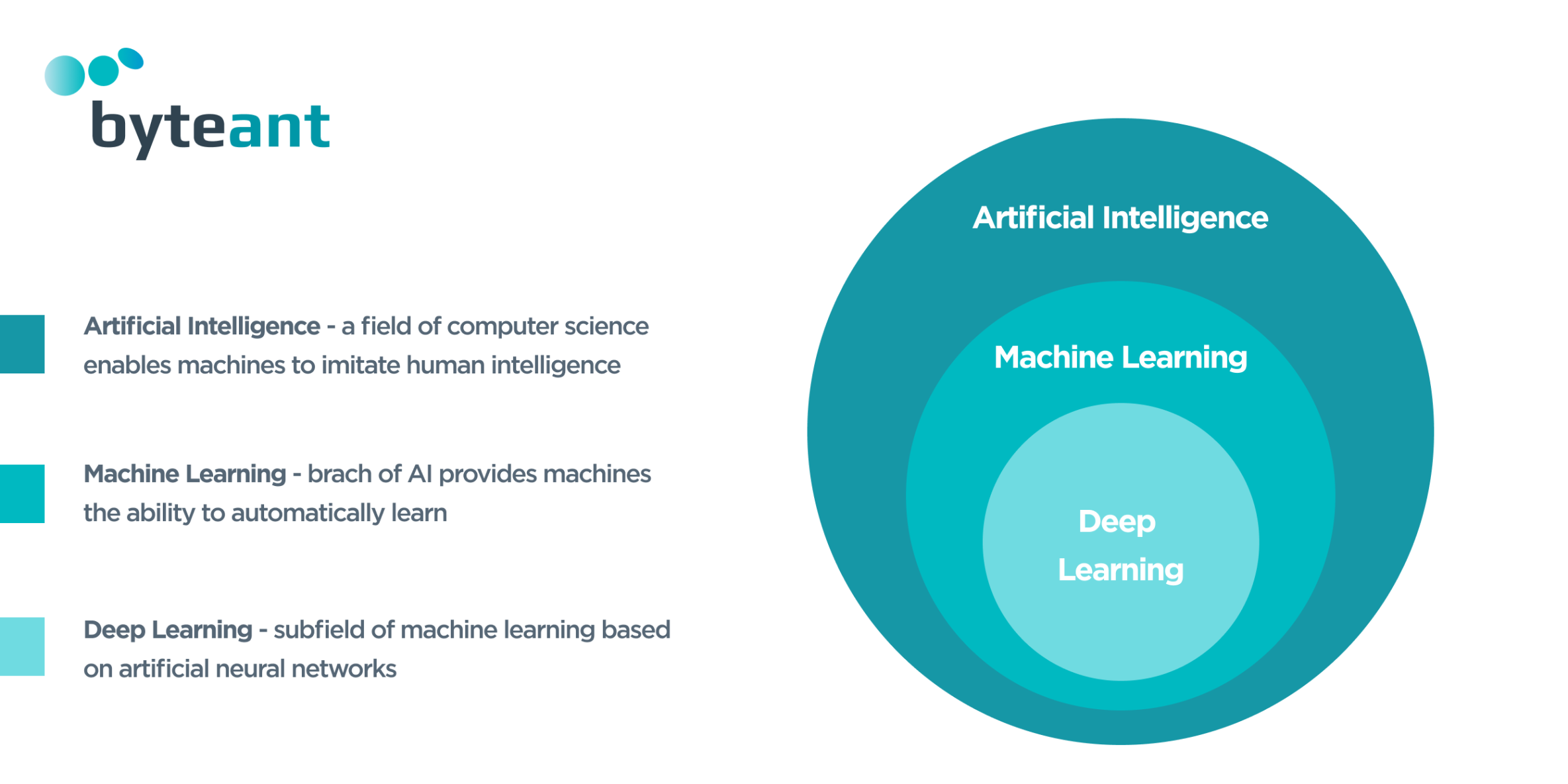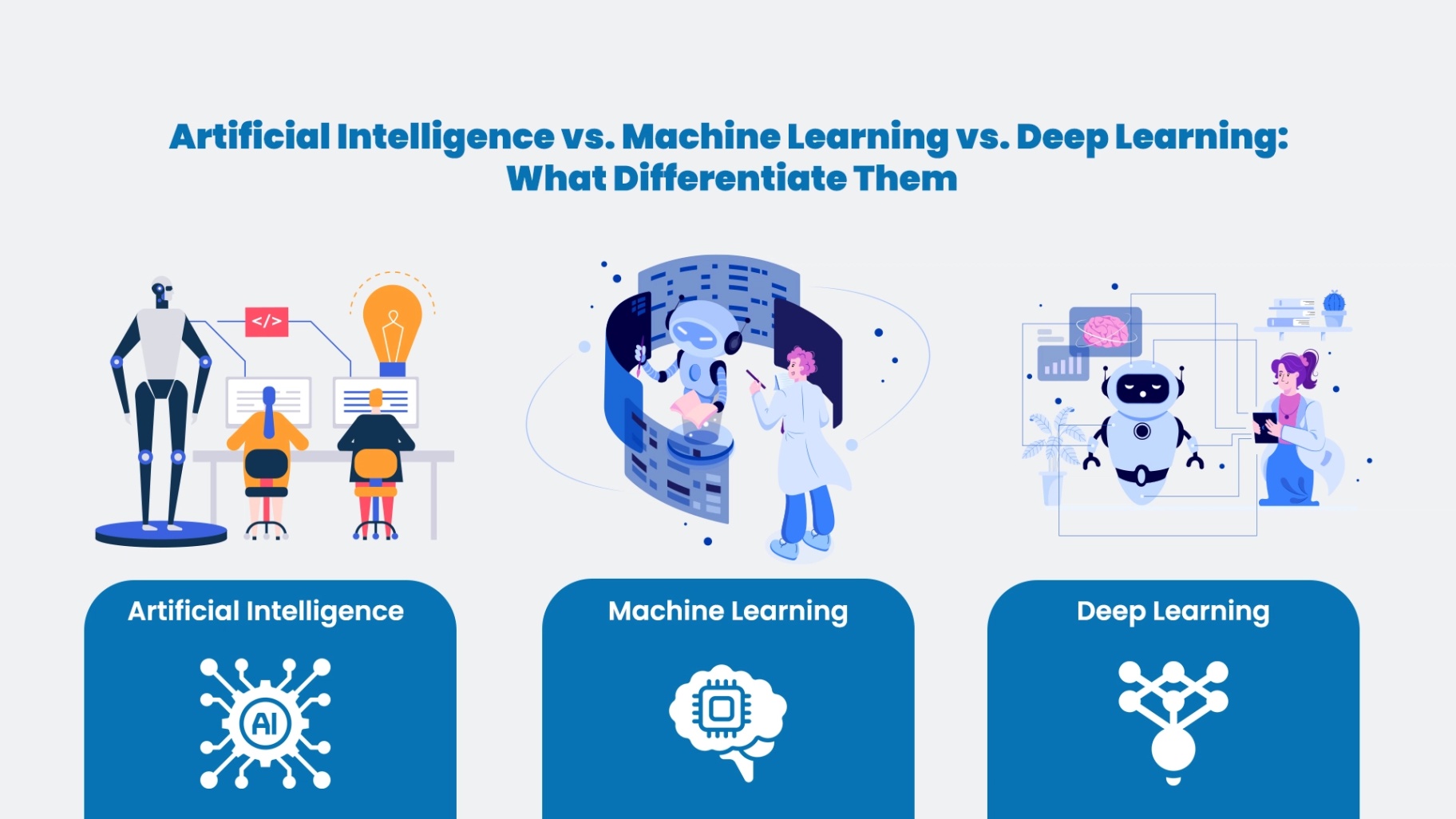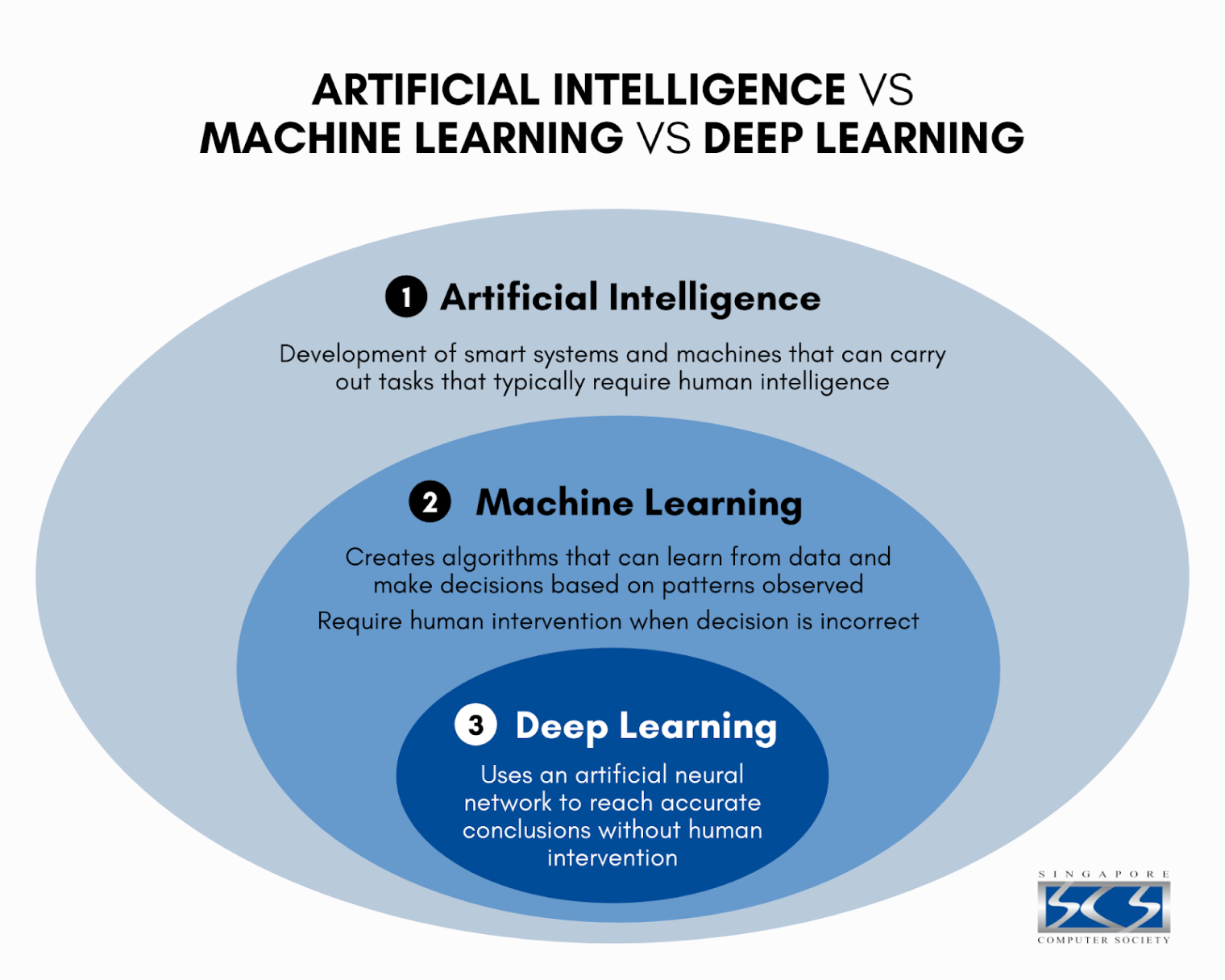The Battle of the Brains: AI vs. Machine Learning
In the exciting world of technology, there is a constant battle of the brains going on between two powerful concepts: Artificial intelligence (AI) and Machine Learning (ML). While these terms are often used interchangeably, they actually represent distinct fields with unique characteristics and capabilities.

Image Source: byteant.com
Artificial Intelligence, or AI, is the broader concept of machines being able to carry out tasks in a way that we would consider smart. It involves the development of algorithms that enable computers to perform tasks that typically require human intelligence, such as visual perception, speech recognition, decision-making, and language translation. AI systems can analyze data, learn from it, and make decisions based on that data.
On the other hand, Machine Learning is a subset of AI that focuses on the development of algorithms and statistical models that enable computers to improve their performance on a specific task through experience. In other words, Machine Learning is a method of teaching computers to learn and make decisions without being explicitly programmed to do so. It involves the use of algorithms that allow machines to learn from and make predictions or decisions based on data.

Image Source: dashtechinc.com
So, what sets AI apart from Machine Learning? While AI encompasses a wide range of technologies that enable machines to mimic human intelligence, Machine Learning is a specific approach to achieving AI. Machine Learning algorithms use data to train models and improve their performance over time, while AI systems can encompass a variety of technologies beyond just Machine Learning.
In the battle of the brains, AI and Machine Learning each have their strengths and weaknesses. AI systems are capable of performing a wide range of tasks and can adapt to changing environments and data inputs. They can make decisions and recommendations based on complex patterns and relationships in data, making them powerful tools for a variety of applications.

Image Source: amazonaws.com
Machine Learning, on the other hand, is particularly well-suited for tasks that involve large amounts of data and complex patterns that may be difficult for humans to discern. Machine Learning algorithms can analyze vast amounts of data to identify trends and patterns, making them valuable tools for tasks like predictive analytics, natural language processing, and image recognition.
In the world of technology, the battle of the brains between AI and Machine Learning is a dynamic and ever-evolving competition. As advances in AI and Machine Learning continue to push the boundaries of what machines can do, the possibilities for innovation and discovery are endless. Whether you’re a tech enthusiast or simply curious about the future of artificial intelligence, the battle of the brains between AI and Machine Learning is sure to keep you on the edge of your seat.
Demystifying the Tech Jargon: A Fun Guide
In a world where technology is constantly evolving, it’s easy to get lost in the sea of acronyms and buzzwords that seem to dominate the conversation. One of the most common areas of confusion for many people is the difference between Artificial intelligence (AI) and Machine Learning (ML). But fear not, because we are here to demystify the tech jargon and provide you with a fun guide to understanding these complex concepts.
Artificial Intelligence, or AI, is a broad term that refers to the simulation of human intelligence in machines that are programmed to think and act like humans. It encompasses a wide range of technologies, from simple algorithms to sophisticated neural networks, that enable machines to perform tasks that traditionally require human intelligence, such as problem-solving, decision-making, and language processing.
On the other hand, Machine Learning is a subset of AI that focuses on the development of algorithms that allow machines to learn from and make predictions or decisions based on data. In other words, Machine Learning is a way of achieving AI by training machines to recognize patterns in data and make intelligent decisions without being explicitly programmed to do so.
To illustrate the difference between AI and Machine Learning, let’s consider the example of a self-driving car. The car uses AI technology to perceive its environment, make decisions on how to navigate the road, and react to unexpected obstacles. This is made possible through Machine Learning algorithms that analyze data from sensors, cameras, and GPS to continuously improve the car’s driving capabilities.
Now that we have a basic understanding of AI and Machine Learning, let’s dive deeper into some of the key concepts and terms that are commonly associated with these technologies.
One important concept to understand is neural networks, which are a type of AI model inspired by the human brain’s structure and function. Neural networks consist of interconnected nodes, or neurons, that process information by passing signals through layers of nodes. This allows machines to learn complex patterns and make decisions based on the input data.
Another key term to know is deep learning, which is a subset of Machine Learning that uses neural networks with multiple layers to analyze and extract patterns from large amounts of data. Deep learning has been instrumental in advancing AI technologies, such as image and speech recognition, natural language processing, and autonomous driving.
Reinforcement learning is another important concept in the realm of AI and Machine Learning. It is a type of Machine Learning where an agent learns to make decisions by receiving feedback from its environment. The agent is rewarded for taking actions that lead to a positive outcome and penalized for actions that result in a negative outcome, allowing it to learn from experience and improve its decision-making abilities over time.
One of the most exciting developments in AI and Machine Learning is the rise of Generative Adversarial Networks (GANs), which are AI models that consist of two neural networks – a generator and a discriminator – that are trained simultaneously in a competitive manner. GANs have the ability to generate new, realistic data samples, such as images, music, and text, by learning the underlying patterns and structures of the input data.
As we continue to explore the fascinating world of AI and Machine Learning, it’s important to remember that these technologies are still in their infancy and have the potential to revolutionize how we live, work, and interact with the world around us. By understanding the basics of AI and Machine Learning and staying curious and open-minded, we can demystify the tech jargon and embrace the possibilities of a future powered by intelligent machines.
Unraveling the Mystery: AI and ML Explained
Welcome to the fascinating world of Artificial intelligence (AI) and machine learning (ML)! In this article, we will take a closer look at these two cutting-edge technologies and explore the differences between them. Get ready to dive into the exciting realm of AI and ML as we unravel the mystery behind these innovative tools.
Artificial intelligence, or AI, is a broad term that encompasses the simulation of human intelligence processes by machines. In simpler terms, AI refers to the ability of a computer or machine to perform tasks that typically require human intelligence, such as visual perception, speech recognition, decision-making, and language translation. AI systems are designed to learn from experience, adapt to new inputs, and perform tasks without being explicitly programmed to do so.
On the other hand, machine learning is a subset of AI that focuses on the development of algorithms and statistical models that enable computers to learn from and make predictions or decisions based on data. In essence, machine learning algorithms allow machines to improve their performance on a specific task over time without being explicitly programmed. Instead of relying on pre-defined rules and instructions, machine learning systems use patterns and inference to make decisions and predictions.
So, what sets AI apart from machine learning? While AI is the overarching concept of simulating human intelligence in machines, machine learning is a specific approach or technique within the AI domain. In other words, machine learning is a tool or method used to achieve AI capabilities. Think of AI as the big picture, while machine learning is the intricate brush strokes that bring that picture to life.
One of the key differences between AI and machine learning lies in their approach to problem-solving. AI systems are typically designed to perform a wide range of tasks and functions, often with a focus on mimicking human intelligence across various domains. Machine learning, on the other hand, is more specialized and focused on developing algorithms that can learn from data and improve their performance on specific tasks.
Another important distinction between AI and machine learning is their level of autonomy and adaptability. AI systems are generally more autonomous and can make decisions and take actions without human intervention. Machine learning systems, on the other hand, require training data and human supervision to learn and improve their performance over time.
In conclusion, while AI and machine learning are closely related concepts within the field of artificial intelligence, they serve distinct purposes and employ different approaches to problem-solving. AI is the overarching concept of simulating human intelligence in machines, while machine learning is a specific technique used to achieve AI capabilities. By unraveling the mystery behind AI and ML, we can gain a deeper understanding of these transformative technologies and their potential impact on the future. So, let’s continue to explore and innovate in the exciting world of AI and machine learning!
Let’s Break It Down: Understanding the Basics
Artificial intelligence and machine learning are two terms that are often used interchangeably, but they actually refer to two different concepts. In order to truly understand the difference between the two, it’s important to break down the basics of each.
Artificial intelligence, or AI, is a broad term that refers to the simulation of human intelligence in machines. This can include tasks such as learning, reasoning, problem-solving, perception, and language understanding. AI systems are designed to mimic human intelligence in order to perform tasks that would typically require human intelligence.
On the other hand, machine learning is a subset of AI that focuses on the development of algorithms and models that allow machines to learn from and make decisions based on data. Machine learning algorithms use statistical techniques to give computers the ability to learn from data and improve their performance over time without being explicitly programmed.
One way to think about the difference between AI and machine learning is that AI is the broader concept, while machine learning is a specific application of AI. In other words, machine learning is a tool that can be used to achieve artificial intelligence.
For example, let’s say you have a computer program that is designed to recognize images of cats. In this case, the program is using artificial intelligence to perform a task that would typically require human intelligence (recognizing cats). Within this program, machine learning algorithms could be used to improve the accuracy of the cat recognition over time by analyzing more and more cat images.
Another key difference between AI and machine learning is the role of data. In order for machine learning algorithms to work effectively, they need access to large amounts of data to learn from. This data can include images, text, audio, video, or any other type of information that the algorithm is designed to analyze.
AI systems, on the other hand, may not always rely on data in the same way. While data can certainly be used to train AI systems, they may also rely on other techniques such as rule-based systems or expert systems to perform tasks.
In summary, while artificial intelligence and machine learning are closely related concepts, they are not the same thing. AI is the broader concept of simulating human intelligence in machines, while machine learning is a specific application of AI that focuses on the development of algorithms and models that allow machines to learn from data.
By breaking down the basics of artificial intelligence and machine learning, we can begin to see the nuances and differences between the two concepts. Understanding these differences is crucial for anyone looking to work in the field of AI and machine learning, as well as for anyone interested in the future of technology and innovation.
artificial intelligence vs machine learning